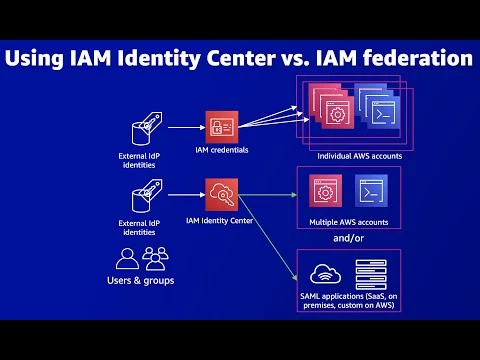If you are asked “what is the difference between Idp and IAM?” what will be your answer? There needs to be some clarity in the identity management market. This is because there are so many acronyms—IAM, IdP, IDaaS, PIM, PAM, MFA, 2FA, and many more—that describe similar but different concepts and solutions.
The good here is that, as you read through this article, you will learn the difference Identity and Access Management (IAM) with the Identity Provider (IdP). In fact, let’s begin with what is IAM.
IAM Explained
IAM simply stands for “Identity and Access Management”. The category of identity management solutions used to control user identities and access to IT resources is known as Identity and Access Management.
It is necessary to note that the IdP, Identity-as-a-Service (IDaaS), Privileged Identity/Access Management (PIM/PAM), Multi-factor/Two-factor Authentication (MFA/2FA), and many more subcategories make up the IAM category.
Also, IAM basically refers to any kind of identity management system that controls user identities and their access to different IT resources.
Now that we have a better understanding of IAM, let’s examine the IdP subcategory in more detail.
READ ALSO!!!
- Is Police Clearance Certificate Required for Canada Student Visa?
- What is the IDP Used for?
- How Do I File a Complaint Against a Company in Nigeria?
- PCC in Nigeria: Significance and Application Process
What is an Identity Provider?
The Identity Provider, sometimes referred to as directory services, serves as the single point of reference for user identity authentication.
Managing core user identities is the primary focus of the Identity Provider which is a subclass of IAM solutions.
The Idp frequently establishes the framework for the whole identity management system within an IT organisation. And it is arguably the most significant subsection of IAM solutions.
In actuality, the basic IdP is frequently layered with additional IAM categories and solutions, such IDaaS, PIM/PAM, MFA/2FA, and others, which function to federate core user identities from the IdP to diverse endpoints.
Thus, the IdP option you select will have a significant impact on your cloud IAM architecture as a whole.
What is the Difference Between IdP and IAM?
We will be answering the question “What is the Difference Between IdP and IAM?” below with the explanation of some related subtopics.
Variation of Identity Provider
Microsoft’s conventional on-premise IAM platform, Active Directory® (AD), is among the most prominent instances of an identity provider.
When AD first hit the market in the late 1990s, most IT networks ran on Windows® OS and were on-premises.
Also, because of the widespread usage of on-premise networks and Windows OS, IT organizations are now able to manage users and access to IT resources using AD from a single, centralized place.
IT administrators are beginning to realize, though, that the Windows-centric approach with AD on-premises might be restrictive as more IT resources move to the cloud and use non-Windows platforms.
Technological Advancements in the Field
Particularly, since the turn of the century, a vast array of novel concepts and technological advancements have been introduced to the market, including virtual storage solutions (such as Samba, QNAP, and FreeNAS), cloud infrastructure (AWS, Azure, and GCPTM), web applications (like Salesforce, GitHub, and Slack), and remote or wireless networks.
For IT companies, putting innovative technologies like these into practice can have a huge positive impact by lowering costs and increasing productivity.
However, the problem lies in the fact that new innovations that aren’t Windows-based or on-premises can be challenging to manage using old IAM platforms directly; instead, they frequently call for extra third-party add-ons (such IDaaS, PIM/PAM, and MFA/2FA) to extend the capability of existing technology.
As a result, rather than selecting the greatest IT resources available, IT administrators are compelled to select IT resources that are easily connected with their legacy IdP.
READ ALSO!!!
- What are the Fastest Electric Racing Cars?
- Are Electric Cars Faster than Regular Cars?
- What is the Highest Speed of an Electric Car?
Next-Generation Cloud Identity
Thankfully, the move to the cloud has spurred something of an IAM renaissance. Emerging next-generation cloud IdPs have the potential to alleviate many of the challenges associated with current standard IAM platforms.
One such example is the JumpCloud® Directory-as-a-Service® platform. This re-centralizes identity and access management (IAM) in the cloud. Thus, it does away with the necessity for third-party add-ons and on-premise identity management infrastructure.
The Directory-as-a-Service platform securely maintains and connects users to almost any IT resource, regardless of their platform or location. And this is by utilizing secure protocols including LDAP, SAML, RADIUS, SSH, and REST.
As part of the whole cloud IAM solution, JumpCloud even provides multi-factor authentication, privileged identity management services, and other security features.




